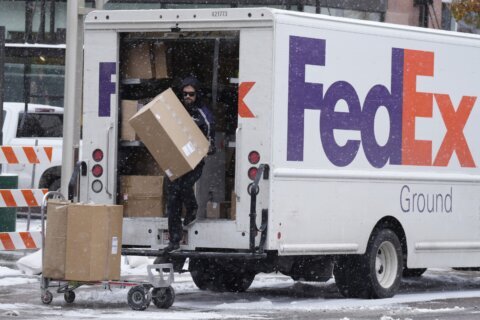New York (CNN) — Sometimes boring and predictable can be good things.
The latest Consumer Price Index report wasn’t flashy by any means: The inflation gauge that measures price changes for a basket of goods and services ticked down slightly to 3.1% for the 12 months that ended in November, according to Bureau of Labor Statistics data released Tuesday.
Stripping out the more volatile components of food and energy, the core index held pat at a 4% year-over-year growth rate, staying at its lowest level since September 2021.
The latest CPI report largely came in exactly as economists had expected and served up another piece of evidence that high inflation is (very) slowly, but surely, abating.
That’s welcome news for the Federal Reserve and for Americans, who are finally starting to not have their earnings completely eaten away by rising prices.
Real average hourly earnings increased an estimated 0.8% annual rate in November, the eighth consecutive month of growth after 24 months in negative territory, according to separate data released Tuesday by the BLS.
A stubbornly high core
However, inflation remains above what the Fed would like to see; and steady, but still growing, prices continue to put pressure on consumers, said Tyler Schipper, economics and data analytics professor at the University of St. Thomas in St. Paul, Minnesota.
“I think there’s starting to be this trickle of good-enough economic news with some real benefits to consumers that, over time, starts to show up,” Schipper told CNN in an interview. “But if you went polling down the street right now, we’re not there yet.”
On a monthly basis, the gauge that measures price changes for a basket of goods and services ticked up 0.1% from October. Core CPI rose 0.3% from October, matching the prior month’s growth rate.
Shelter prices rose for the second consecutive month, helping to offset the fall in gas prices, which sank 5.8% from October. Food prices moderated slightly from the month before.
Economists were expecting prices to stay flat over the month and for the annual rate to ease to 3.1%, according to Refinitiv. They expected core to stay unchanged at 4%.
Core goods prices declined, but helping to prop up core inflation was the rise in shelter costs as well as used cars, which were up 1.6% from October.
The used car price spike should reverse in the coming months, economists said.
Wholesale used car prices temporarily rose in August and September amid concerns over the United Auto Workers strike; however, those wholesale prices then retreated in October and November, Bank of America economists wrote in notes issued this week.
The shelter index, which is a measure of rents and the implicit rental value of owner-occupied properties, continues to be a concern, said Phil Powell, executive director of the Indiana Business Research Center and clinical associate professor of business economics and public policy at Indiana University.
“There is a very large shortage of affordable homes or even rentals,” Powell told CNN. “The rate of new household formation is double the rate of population growth; we haven’t seen anything like this in a long time. Because of the structural misalignment between supply and demand, we will continue to see housing prices and shelter increase long term.”
Progress, but not yet mission accomplished
On Tuesday, President Joe Biden hailed the progress on inflation, as it’s now down nearly two-thirds from its peak of 9.1% in June 2022.
“Inflation has come down while unemployment has remained below 4% for the longest stretch in 50 years, which means that workers’ wages and household wealth are higher now than they were before the pandemic, adjusted for inflation,” he said in a statement. “Prices have declined for a number of products over the last year from cars and gallons of gas to TVs, toys, many appliances, to eggs and milk.”
He added: “Despite this progress, I know many Americans still find too many things unaffordable.”
The Federal Reserve has been on a monthslong campaign of rate hikes to bring down inflation, which soared to a 41-year high last year. The central bank will make its latest monetary policy decision on Wednesday, and is largely expected to leave its benchmark rate unchanged again.
“This will not have any meaningful impact on tomorrow’s likely decision to hold rates steady, but it provides the Fed some ammunition to reiterate that rate cuts as early as March 2024 remain premature,” said Olu Sonola, head of US regional economics for Fitch Ratings, in commentary Tuesday morning. “Goods and energy deflation continue to be the much-needed gift that keeps on giving. However, the acceleration in core services inflation across both shelter and non-shelter services is a reminder that the sustained downward path in core services inflation that the Fed wants to see is still not within reach.”
Sonola added: “The trend is still undoubtedly encouraging, but the fine details here will sow some doubts.”
Fed Chair Jerome Powell in recent months has acknowledged the progress on inflation but consistently iterated that it’s far too premature to declare victory. The central bank has a target inflation rate of 2%, as measured by the core Personal Consumption Expenditures price index.
“This report is very good news for the soft landing contingent,” Allison Oldham Luedtke, assistant professor of economics at St. Olaf College in Northfield, Minnesota, told CNN in an interview. “We are in the smoothest of descents. We just need to be a little patient about it.”
The-CNN-Wire
™ & © 2023 Cable News Network, Inc., a Warner Bros. Discovery Company. All rights reserved.







